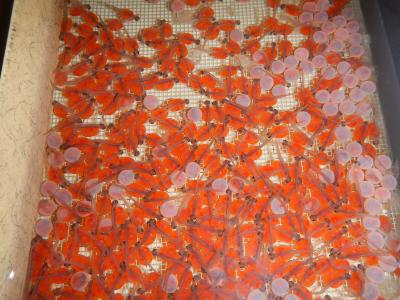FOR IMMEDIATE RELEASE
MEDIA CONTACT: Clare Leschin-Hoar, cleschinhoar@ucsd.edu
May 1, 2023
Scientists have warned that increased pressures like climate change, pollution, drought and habitat loss are putting greater stress on many of the world's already struggling species. In some cases, it's also prompting researchers to consider cutting-edge tools like genetic rescue as a way to preserve populations that are at risk of vanishing. In California, that includes endangered coho salmon in the Russian River.
In a newly published paper in Conservation Letters, lead author Kasey Pregler, a postdoctoral researcher at UC Berkeley, and others demonstrate that genetic rescue — the practice of breeding members of a dwindling population with an unrelated group to increase genetic variation and improve population fitness and size — is showing potential in bolstering the imperiled population of Russian River coho salmon.
Researchers found that breeding the Russian River salmon with a larger and more genetically diverse population of coho salmon from nearby Olema Creek improved the fitness of Russian River fish. The study’s findings suggest that this type of assisted gene flow could prove an important strategy for the conservation and recovery of salmon and other species.
“Results of this study are encouraging,” says co-author Mariska Obedzinski, an extension specialist with California Sea Grant. “Breeding these two fish groups improved genetic variation and increased salmon survival in the hatchery and in the streams. It marked a turning point for struggling salmon in the Russian River.”

When conservation hatchery was first used as a preservation effort, breeding Russian River coho with Olema Creek fish was avoided over worries that the fish would stop adapting to the local conditions of their streams.
The hatchery used a variety of strategies to increase adult coho returns to the watershed, but the population had dwindled to fewer than ten returning adults. Risks of deformities and low survival caused by inbreeding of the remaining coho outweighed concerns of the potential loss of local adaptation. That made genetic rescue a compelling choice. Now, the number of returning Russian River coho salmon is in the hundreds.
"While genetic rescue has alleviated the genetic risks associated with small population size, more work is needed to continue to address the problems that caused the population decline in the first place,” says Pregler.
Other endangered species continue to face many of the same issues, such as habitat degradation and climate change. For several, the threats are accelerating.
"Whether genetic rescue should be used in conservation programs like this one is a relevant question for many populations that are on the brink of disappearing,” says Obedzinski. “This study provides timely information that can help inform decisions on other populations and species.”
About California Sea Grant
NOAA’s California Sea Grant College Program funds marine research, education and outreach throughout California. Headquartered at Scripps Institution of Oceanography at the University of California San Diego, California Sea Grant is one of 34 Sea Grant programs in the National Oceanic and Atmospheric Administration (NOAA), U.S. Department of Commerce.